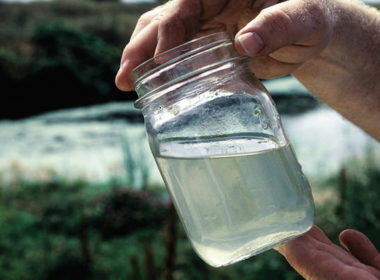
Several schools are wondering: How many microplastics per liter are in the water near our beach? How does that compare to other places along the coast of Maine?
If you’d like to contribute to this investigation, see more information on how to be involved below.
Instructions / How to do this investigation
Advanced Preparation
-
- Choose at least one beach location from which you will collect a water sample.
- Be sure to record the tide levels, precipitation types, and both wind speed and direction, for the 24 hour period prior to each sample collection.
- It is very easy to contaminate a sample during collection with plastics from the environment. Do your best under your given circumstances to avoid contaminating your samples with additional plastics. For example:
- Avoid using plastic to collect, store, or filter samples. (If you can’t avoid plastic containers, please don’t let that stop you from participating in the investigation, though.)
- Be careful if you are wearing clothing containing polyester not to let any fibers from your clothes get into the sample, while collecting or back in the lab.
- Keep all collection containers capped until you are ready to use them.
- Read through the field instructions and sample analysis instructions sections below, and be sure to assemble and check all materials ahead of time.
- Choose an adequate container or containers to collect your sample. Non-plastic is best, but if plastic is all you have, use it. Please keep the following in mind:
- You need a total of 4 gallons.
- Your total sample will be divided into four 1-gallon portions for filtering and microplastic identification.
- If you end up collecting more water than you need (for example, if you use a large bucket for collection), filter at least four gallons of it (see page 4).
- Prepare your nylon mesh before you need it for filtering
- Seal the edges so they don’t fray by either using some sort of waterproof glue, or by melting them with a match or lighter.
- Determine the equipment needed to use the mesh to filter samples, and test your method using plain water.
- Please note that a microplastic is less than or equal to 5 millimeters at it’s fattest or longest part, whichever is bigger.

Comments
Tell us how your data collection/analysis is going